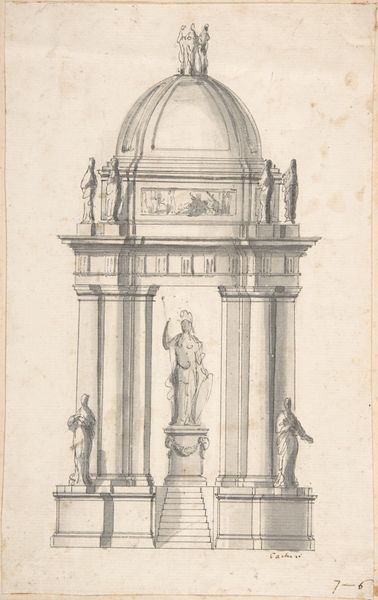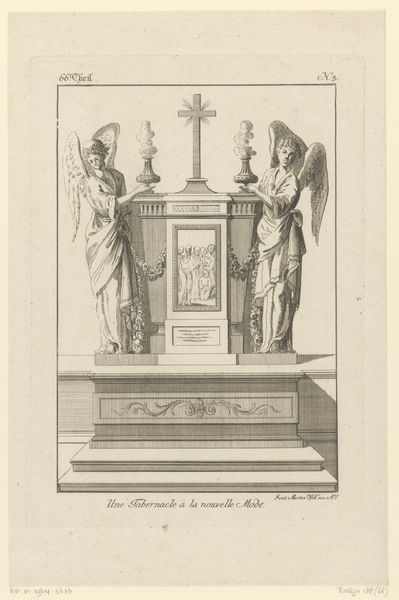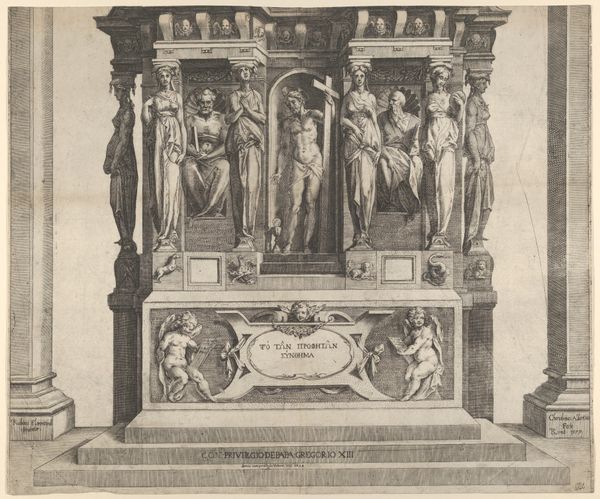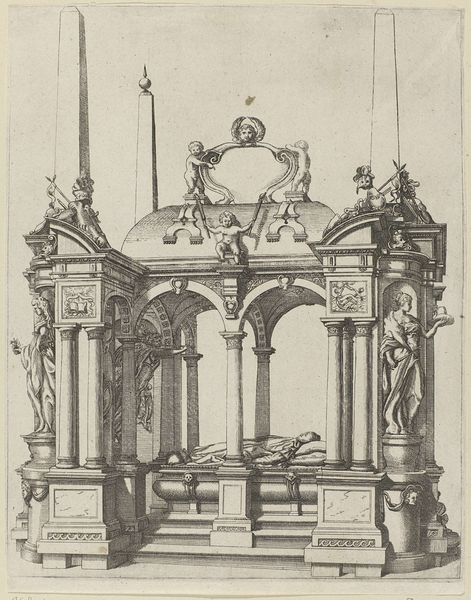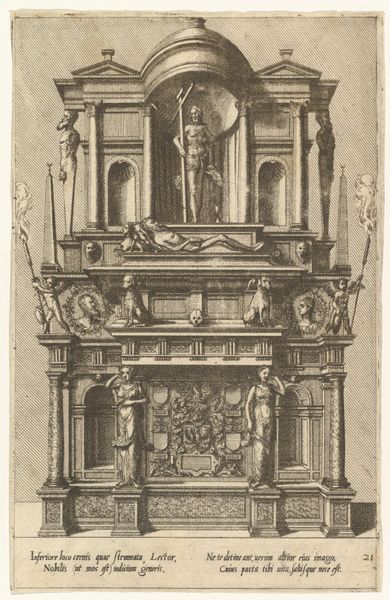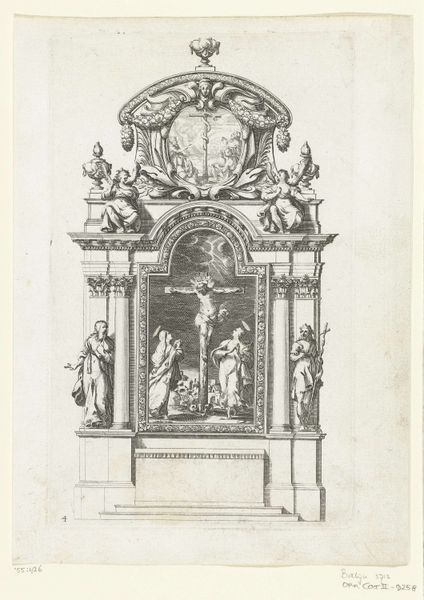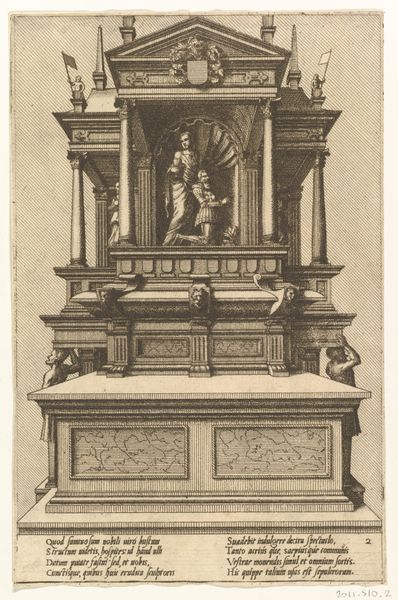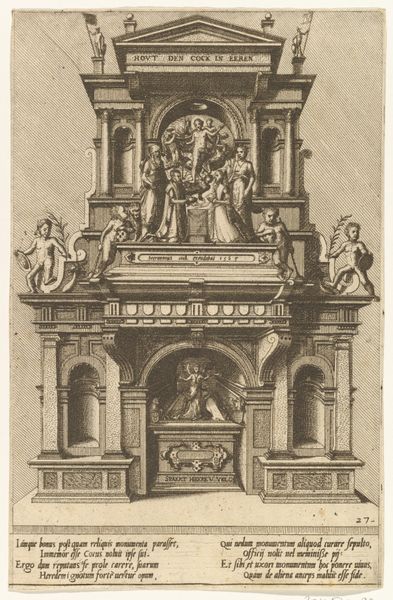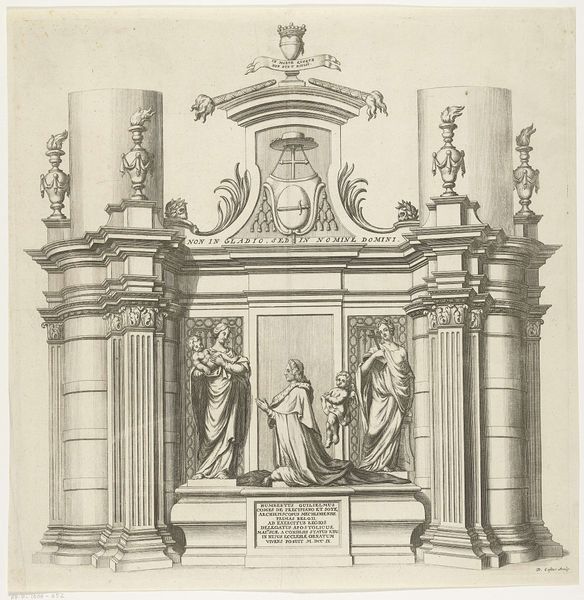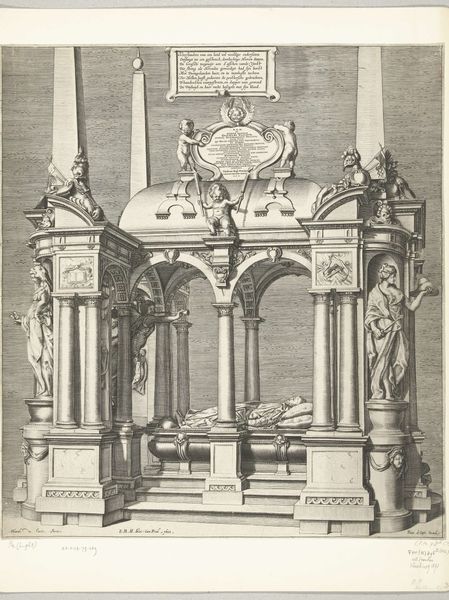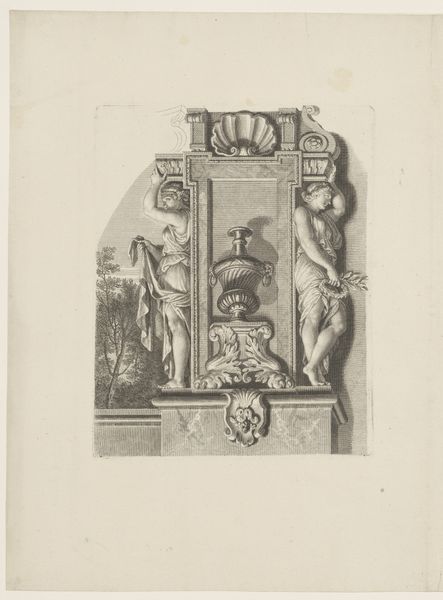
print, etching, engraving, architecture
# print
#
etching
#
classical-realism
#
figuration
#
history-painting
#
engraving
#
architecture
Dimensions: 190 mm (height) x 143 mm (width) (bladmaal)
Curator: Well, the first thing that jumps out is that it feels meticulously crafted, but almost dreamlike. There's a strange ethereal quality to it. Editor: Indeed. We are looking at an 1851 print, made through etching and engraving, representing the Christian III Monument. The artist is Julius Magnus-Petersen. The classical realism employed renders the tomb both historically significant and remarkably detailed. Curator: Ah, Classical Realism. So it’s aiming for accuracy, but with this almost softened edge. The detail is fantastic; you can see the texture of the stone, the way the light catches those tiny angelic figures… but it’s not cold, you know? There's a warmth. Like looking at a memory. Editor: The monument serves as more than mere decoration. It underscores Christian III’s role in the Reformation. Note how it combines religious symbolism with a display of royal power. Statues of soldiers flank the tomb, which gives it a protective air, while above, we have allusions to Christian faith, underlining his devotion. It subtly argues for his divinely sanctioned rule. Curator: It feels very… curated. As though every aspect is considered. What gets me is that crucifix towering above—and I cannot help but think about that symbol within its complicated social and political contexts—especially concerning authority and devotion. It's not just ornamentation, but the claim of legitimacy. Editor: Exactly. The piece sits firmly within the debates around religious and political legitimacy that roiled Europe at the time, specifically how a monarch's legacy can be both enshrined and manipulated through art. We should be asking how art like this reinforces, or resists, hegemonic power structures. Curator: I think you put that so precisely. It does invite you to ponder the intention. Still, looking at it, even if one is divorced from all its specific histories, the sheer weight of stone, the solemn figures... It whispers of mortality. Perhaps all monuments speak to this to a certain degree. Editor: In contemplating the themes of history and representation evident here, we become keenly aware of the dynamic relationship between power, memory, and artistic expression. Thank you for sharing those sentiments with me. Curator: And thank you for bringing a new dimension to it. Now when I look, I see both artistry and ideology interlaced, I could even go on to claim this tension IS the art.
Comments
No comments
Be the first to comment and join the conversation on the ultimate creative platform.
